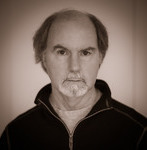Question for Guy and Others Feel Free to Chip In!
-
Recently Browsing 0 members
- No registered users viewing this page.
-
Similar Content
-
- 5,448 replies
- 468,806 views
-
- 1 reply
- 122 views
-
- 7 replies
- 617 views
-
- 11 replies
- 396 views
-
- 6 replies
- 372 views
-





Recommended Posts
Join the conversation
You can post now and register later. If you have an account, sign in now to post with your account.
Note: Your post will require moderator approval before it will be visible.